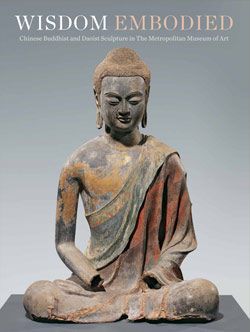Polestar Deity Kui Xing
The Pole Star, a popular religious figure associated with the Lord of Literature (Wen Chang Dijun), was the tutelary spirit presiding over the civil-service examinations. Depicted as a demonic figure (the name of the star is a homophone for the word for "eminent," which is composed of the ideograph for "demon" and the ideograph for "dipper"), the Pole Star had a cult that became particularly important in Ming times, when the number of examination candidates competing for the limited number of available official appointments made divine help all the more welcome.
This dynamic figure shows the god in the act of adding the final dot to the Big Dipper constellation over which he presides. The deity, his robes swept backward by a cosmic wind, balanced on one foot (now missing) while holding aloft a brush (also missing). In his left hand he grasps an ingot of gold or silver, symbolic of the emoluments forth-coming from examination success.
This image cannot be enlarged, viewed at full screen, or downloaded.
This artwork is meant to be viewed from right to left. Scroll left to view more.




